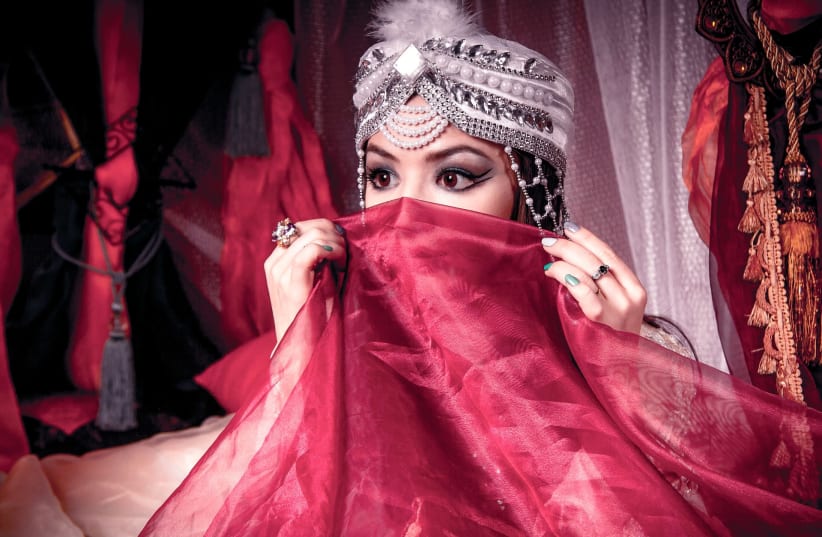The Sages understood that Esther’s demand that Purim be established as a national holiday and that the Megillah be included in the writings of the Bible was in fact valid. The Jewish people were in physical and existential danger, as Haman sought to “destroy, kill, and cause to perish all the Jews, both young and old, little children and women, on one day.” Yet, the result was that “it was reversed, the Jews should rule over their enemies. It is thus appropriate to commemorate the miracle every year and for the Megillah, which depicts these events, to be included in the holy writings of the Bible.
Why, though, did Esther not say “Commemorate us for future generations” and “write an account of us for posterity,” as Mordechai was seemingly an equal partner in the volte-face and the miraculous events that took place in Shushan? Why did Esther not take care that Mordechai too be memorialized for eternity? Was it not Mordechai who dressed himself in sack cloth and took it upon himself to approach the king’s palace just as disaster was about to strike? Moreover, it was Mordechai who spurred Esther on, as the Megillah relates that he told her “For if you remain silent at this time, relief and rescue will arise for the Jews from elsewhere. The Sages’ actions are even more astonishing, as they acceded to Esther’s demand and memorialized Esther alone in the title of the Megillah, and did not entitle it Megillat Mordechai, or at the very least Megillat Esther and Mordechai.
On a superficial level, we might suggest that Esther alone approached the Sages and asked that they “commemorate me for future generations.” It is for this reason that the Megillah is named for her. Moreover, it was Esther who facilitated the salvation and miraculous events and therefore the Megillah bears her name alone.
Another approach states that since the entire miracle was veiled and occurred beneath the surface – Mordechai heard Bigtan and Teresh plotting the murder of the king, he related the news to Esther, the plot and Mordechai’s involvement were registered in the king’s diary and then, at the appropriate time and in mysterious fashion, Mordechai received his reward and the flow of the story was completely reversed. For this reason, the Megillah is named Esther from the Hebrew word hester, hidden.
In reading the Megillah we discover that it is emphasized that Mordechai is Jewish "A Jewish man was in sueshan and his name is… " he was one of the sages of the Sanhedrin. When the king’s decree to “destroy, kill, and cause to perish all the Jews” was issued and signed with the royal signet ring, it was only natural that Mordechai would tear his clothes, dress himself in sack cloth, go out to a public place, bemoan his fate and do everything in his power to reverse the decree As opposed to Mordechai,. Esther is orphaned of both her father and her mother, and that she was a beautiful young woman raised in the capital city of Shushan as a regular member of Persian society. Her name, Esther, bears witness to her background, as stated by the Talmud in tractate Megillah: “Hadassah was her name. Why then was she called Esther? All peoples called her so after Istahar. Rashi explains that the name refers to the moon, as it is written, “as beautiful as the moon. Esther was taken to the palace and became the Persian Empire’s first lady, could not be expected to act similarly. Esther thus surprised when she called Mordechai, ordered him to collect all of the Jews and endangered herself by approaching the king without being summoned.
Esther had reached the highest echelon of society when she chose to act, and urged Mordechai to similarly act, to save her family and the Jewish people. When she approached the king without invitation, she ran the risk of losing not only her glory and status, but also her life.
Esther, who assumed great personal risk by approaching the king to ask for mercy for her people, earned the right to request “commemorate me for future generations” and “write an account of me for posterity.” It was for this reason that the Sages acquiesced to her request. Esther merited that the Megillah would be written and preserved for future generations and would bear her name. In this way, the Sages wished to encourage Jews the world over, in every generation, to act for the benefit of their people. By committing acts such as these, the Sages guaranteed that the agents would be enshrined in the annals of the Jewish people for posterity.
Rabbi Yechiel Wasserman Heads the Center for Religious Affairs in the Diaspora of the World Zionist Organization.
